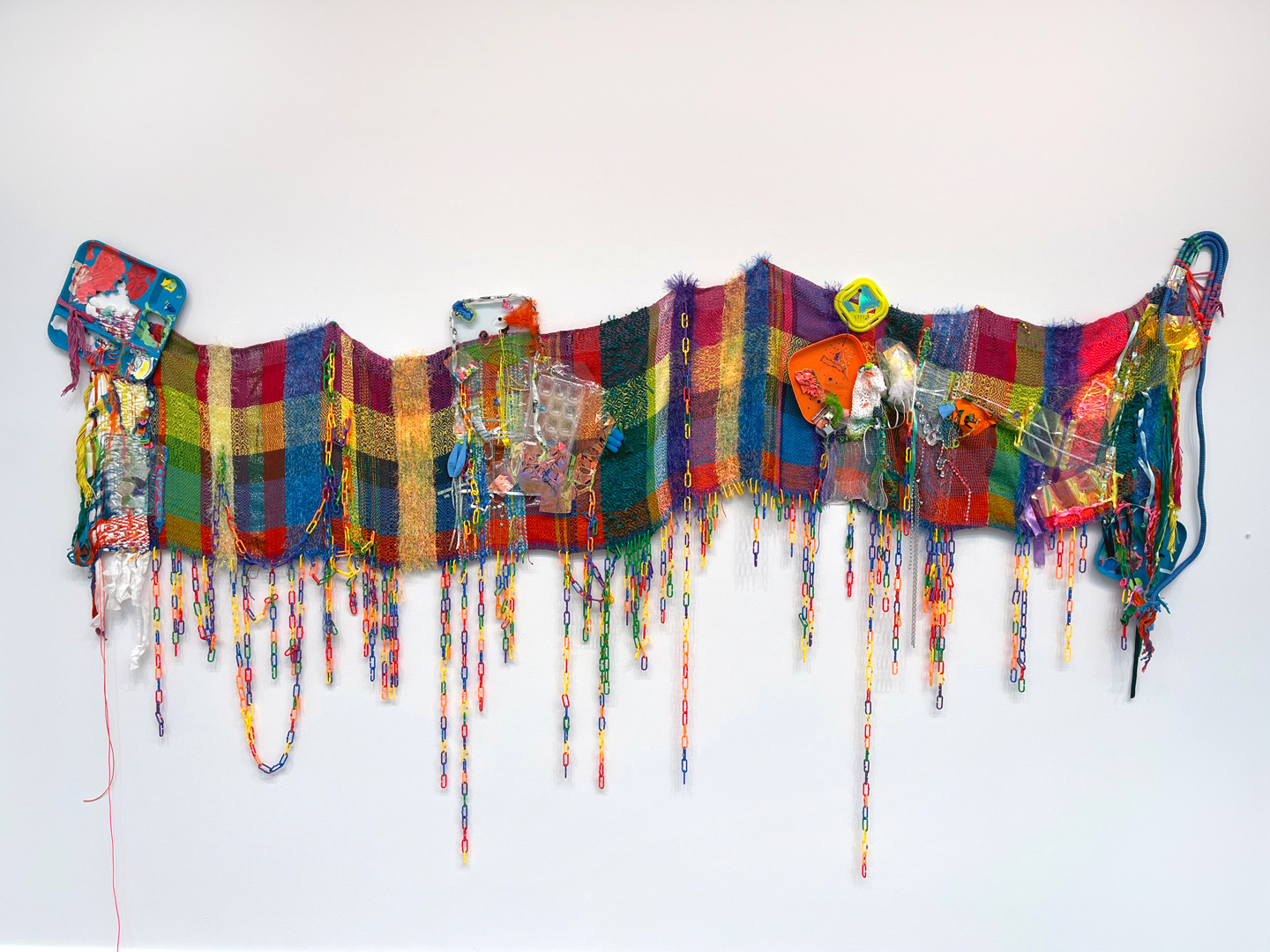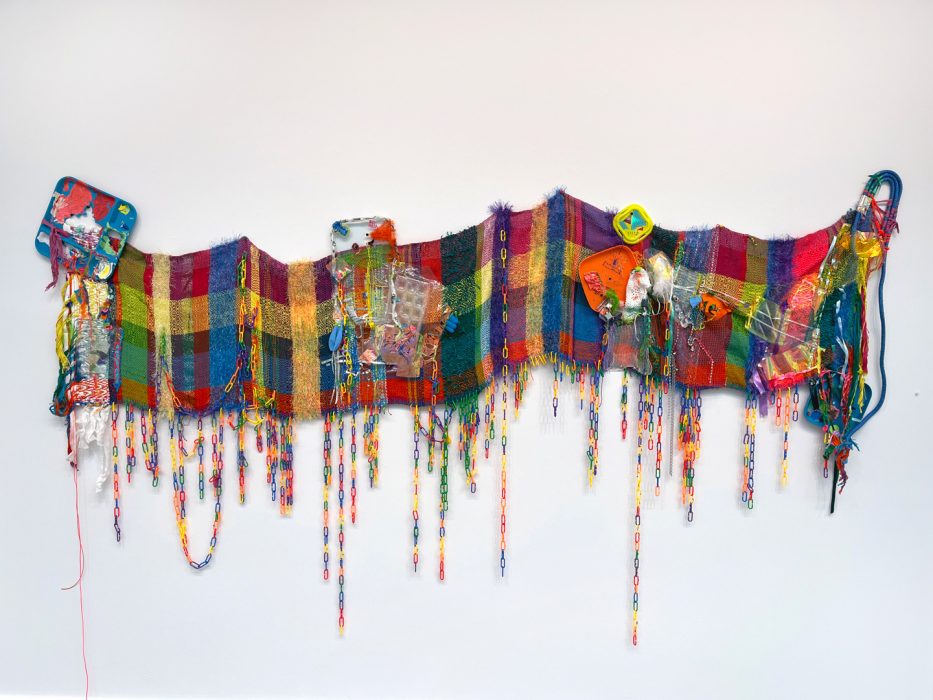November 1, 2023

Transcript by Gallery & Curatorial Fellow Calla Savelson

Transcript
This piece, titled Slip n Slide, 2023, features over 100 inches of woven material paired with plastic plates, nylon rope, yarn, balloons, an ice cube tray, plexiglass, rubber gloves, ribbons, and various other brightly colored, mesmerizingly textured media. Looking closely, you can find familiar, everyday objects in the multitude of rainbow materials that Loretta Park uses in much of her work. Here, she transforms them into something complex and new. As a viewer, I am immediately drawn with innocent wonder to Park’s work, imagining how as a child, I would absolutely love to get lost in this show (and also want to touch anything and everything).
This association with childhood is something that inspired the title of this exhibition, Sea Glass is Diamond. While working with children over the summer during her residency at the Brookline Arts Center, Park explained how a member of one of the youngest groups she worked with, 3-5 year olds, came up to her wondering if the materials she was working with were real diamonds. Others would exclaim that they had found rubies, when they were pointing to what was actually just red plastic. Park finds children to be more intuitive; they are able to jump into this magical world of diamonds and rubies without as much resistance as adults. As a viewer, I am inspired by the youthfulness of Loretta’s work. With youth comes hope, freshness, and above all, fun.
Something else that is inspiring about Park’s work is her commitment to accessibility. Many times artists are boxed in by the notion that more expensive materials means better materials means better work. Park wonders what determines this. Why is cardboard limited to model making and prototyping projects, but not for final work? In her pieces, Loretta challenges this idea by using inexpensive, found, and second hand materials. Working in an environment where she is constantly surrounded by other artists, she is able to use materials that colleagues and students no longer need, repurposing them in her own work. If she is purchasing items, they are mostly coming from dollar stores or other inexpensive options. Her work is shown in free settings such as The Station in Fenway, Mass Art Art Museum, and here, at Simmons University.
This commitment to accessibility allows a chance for the art world to expand. Far too often, art has been reserved for people with the resources and time to spend on creating, learning, and visiting spaces requiring admission fees such as museums. It’s amazing to see an artist such as Loretta Park breaking these barriers in her process, as well as her final product.
How can we continue to make art as accessible as possible? How can we invite and encourage the child-like wonder that Park achieves so beautifully in other aspects of our world to foster exploration, experimentation, and joy?